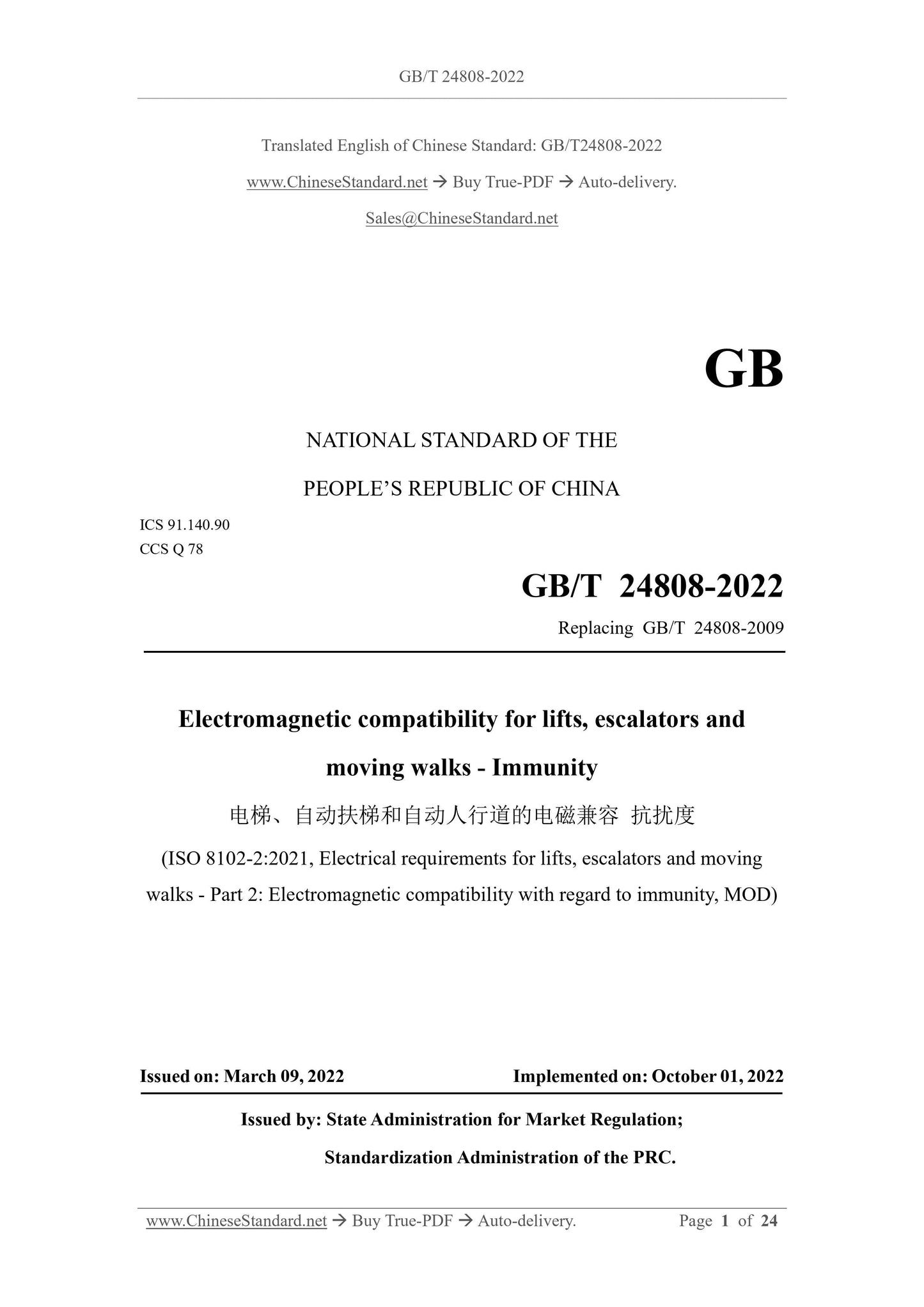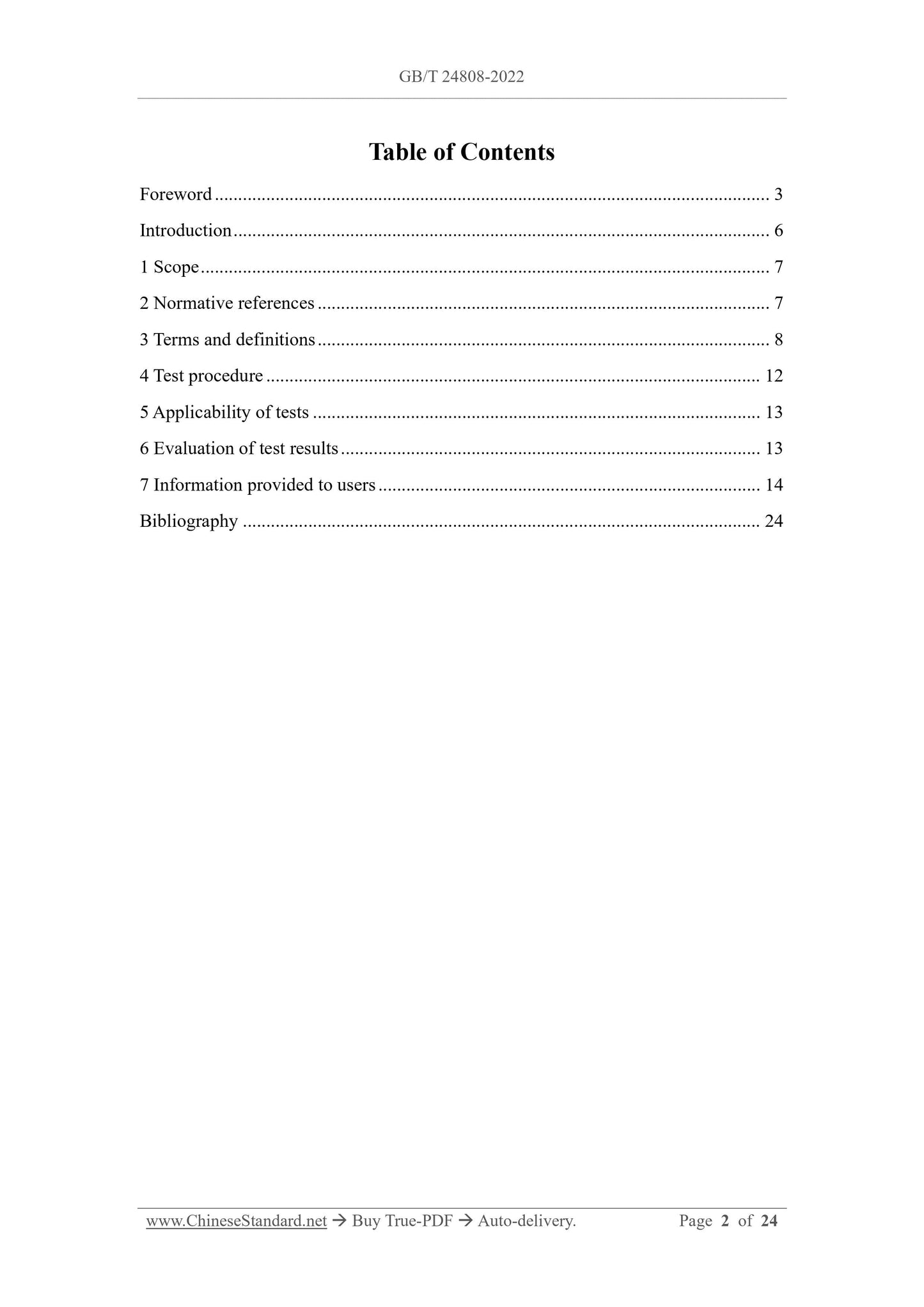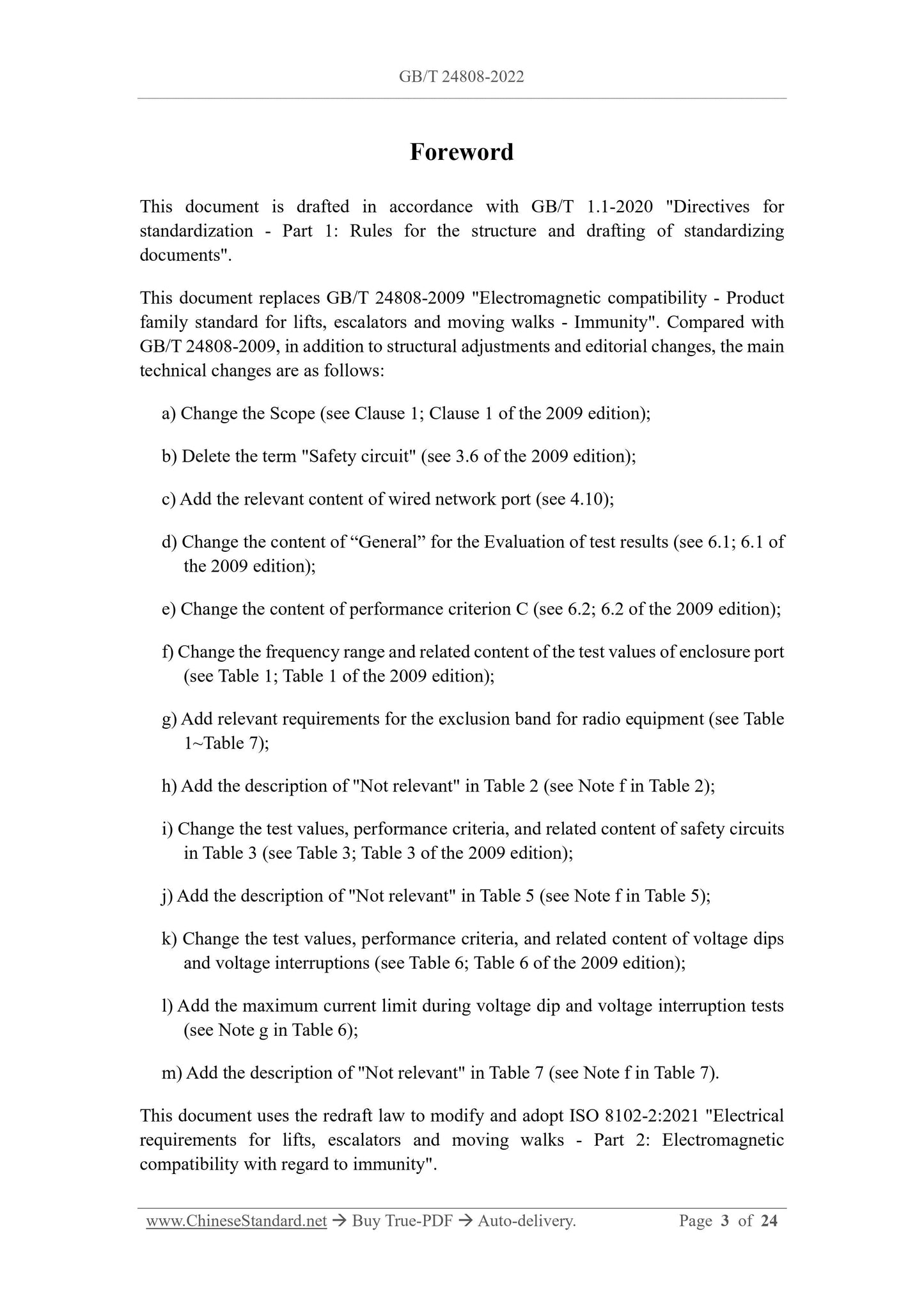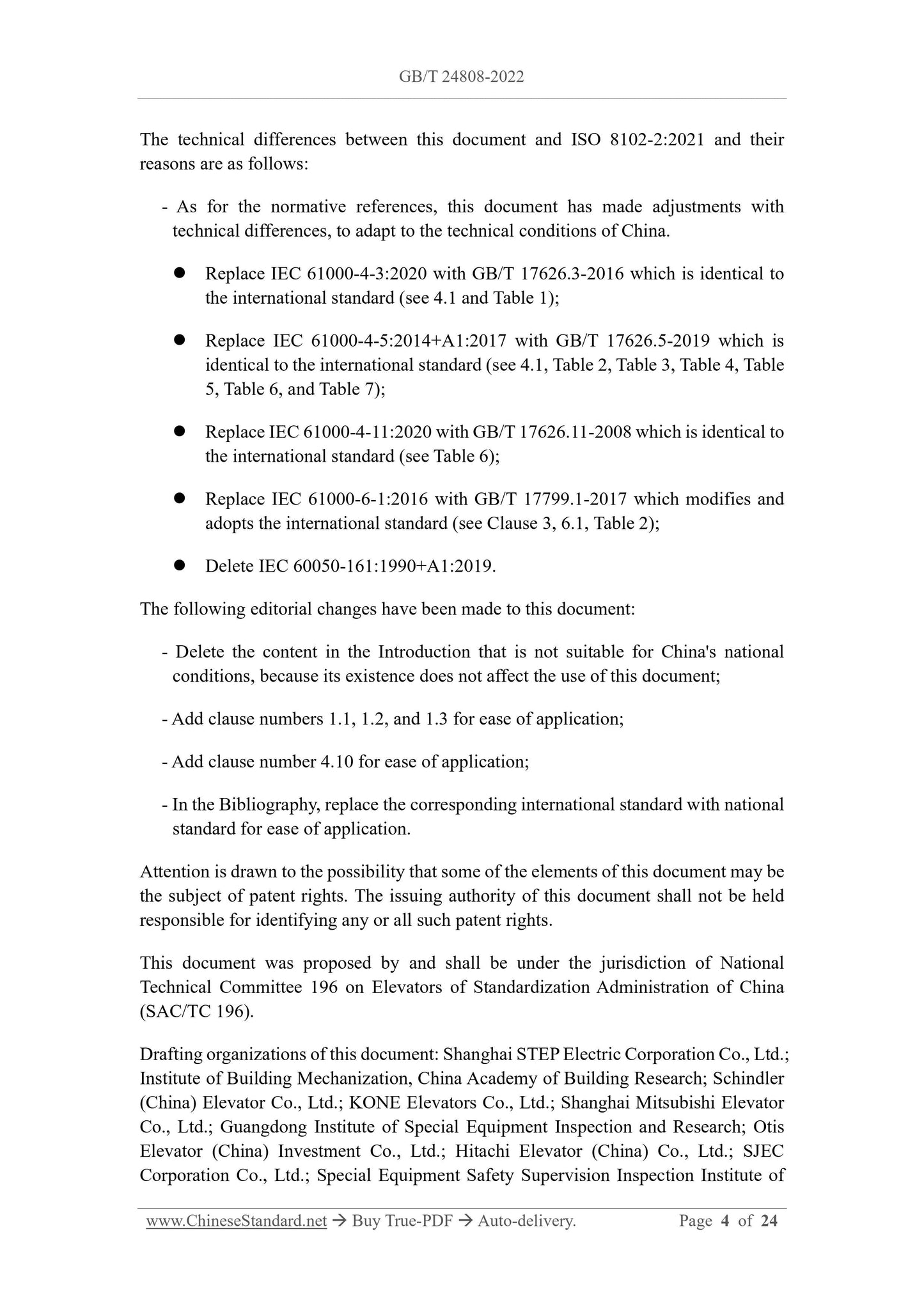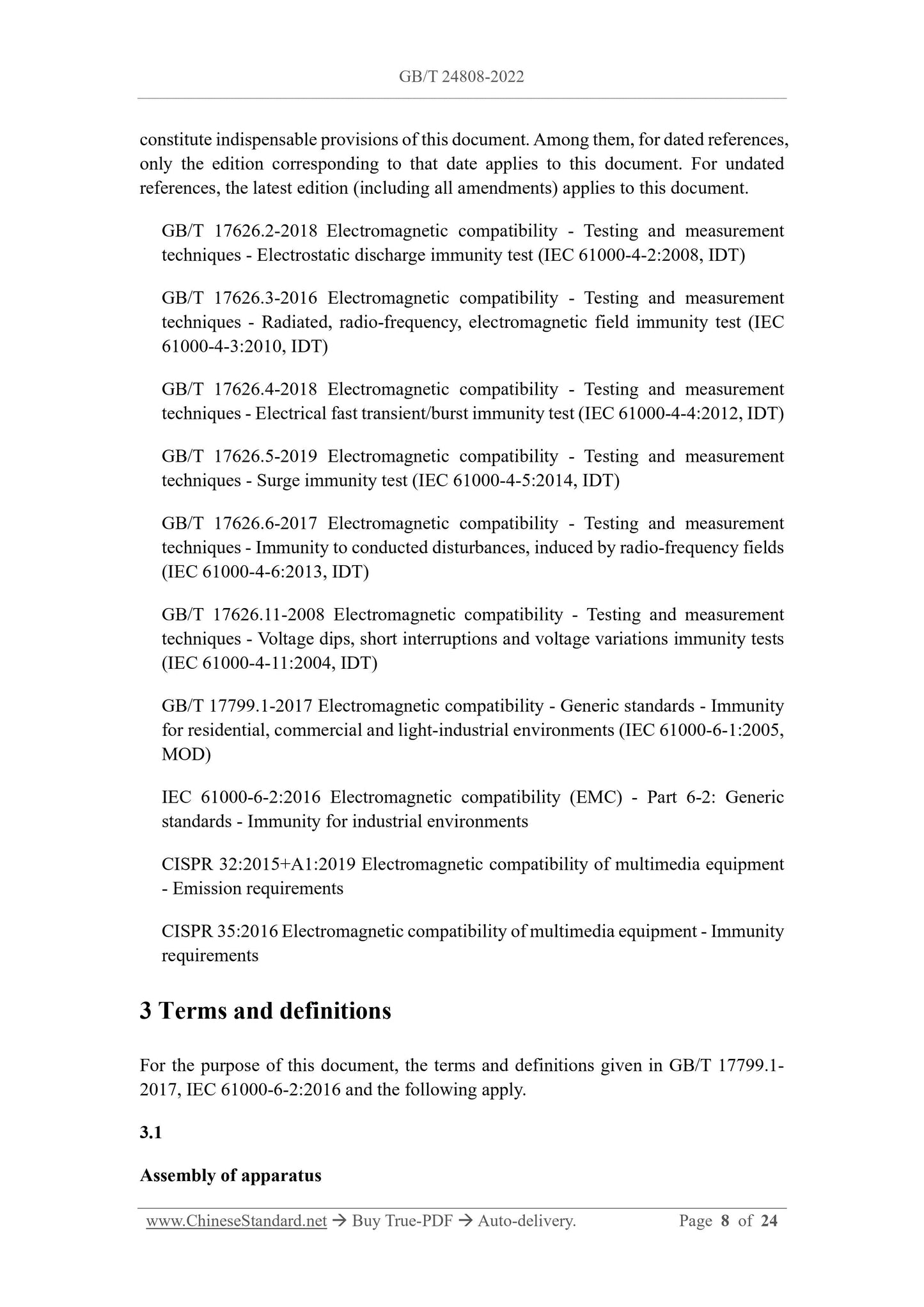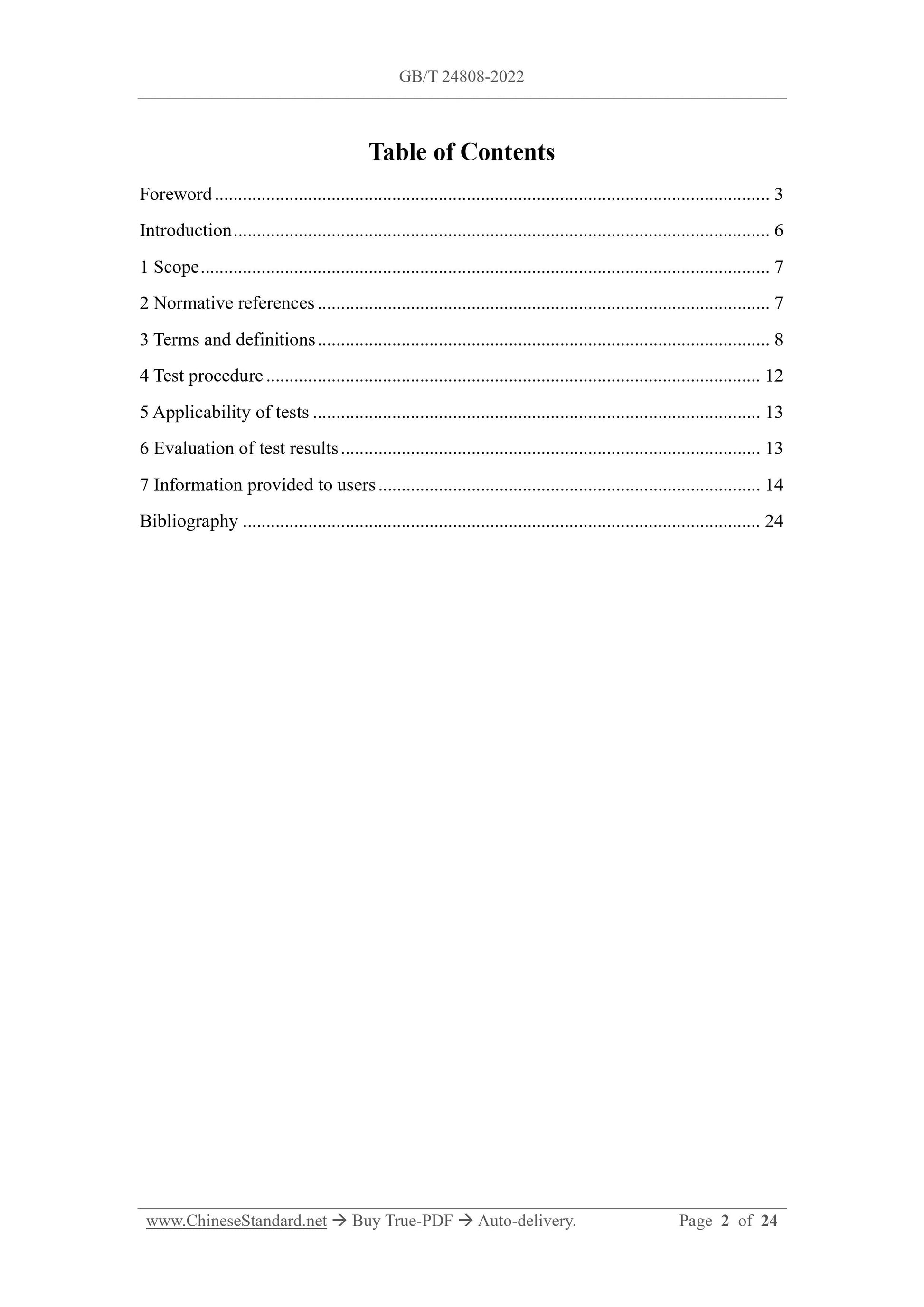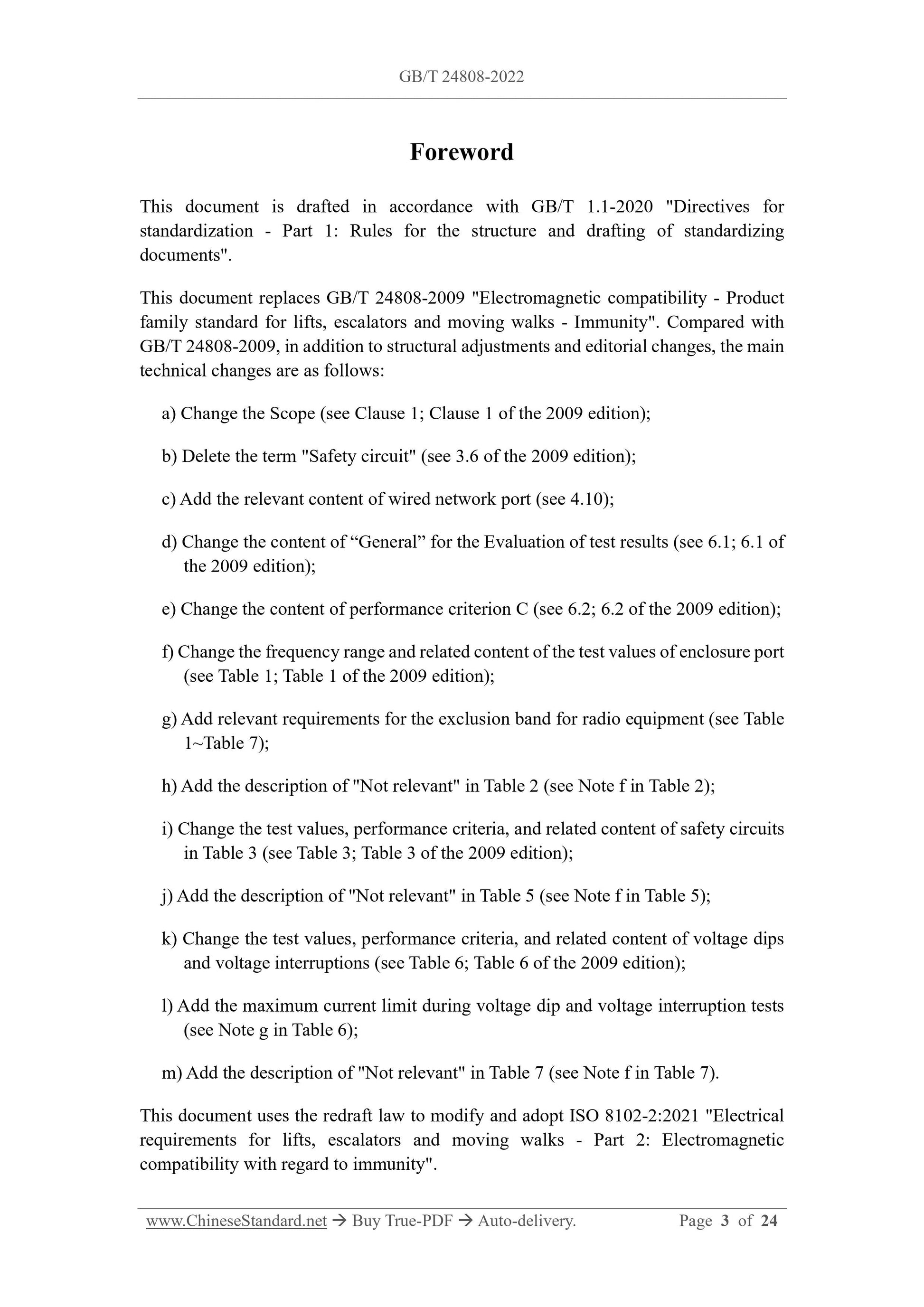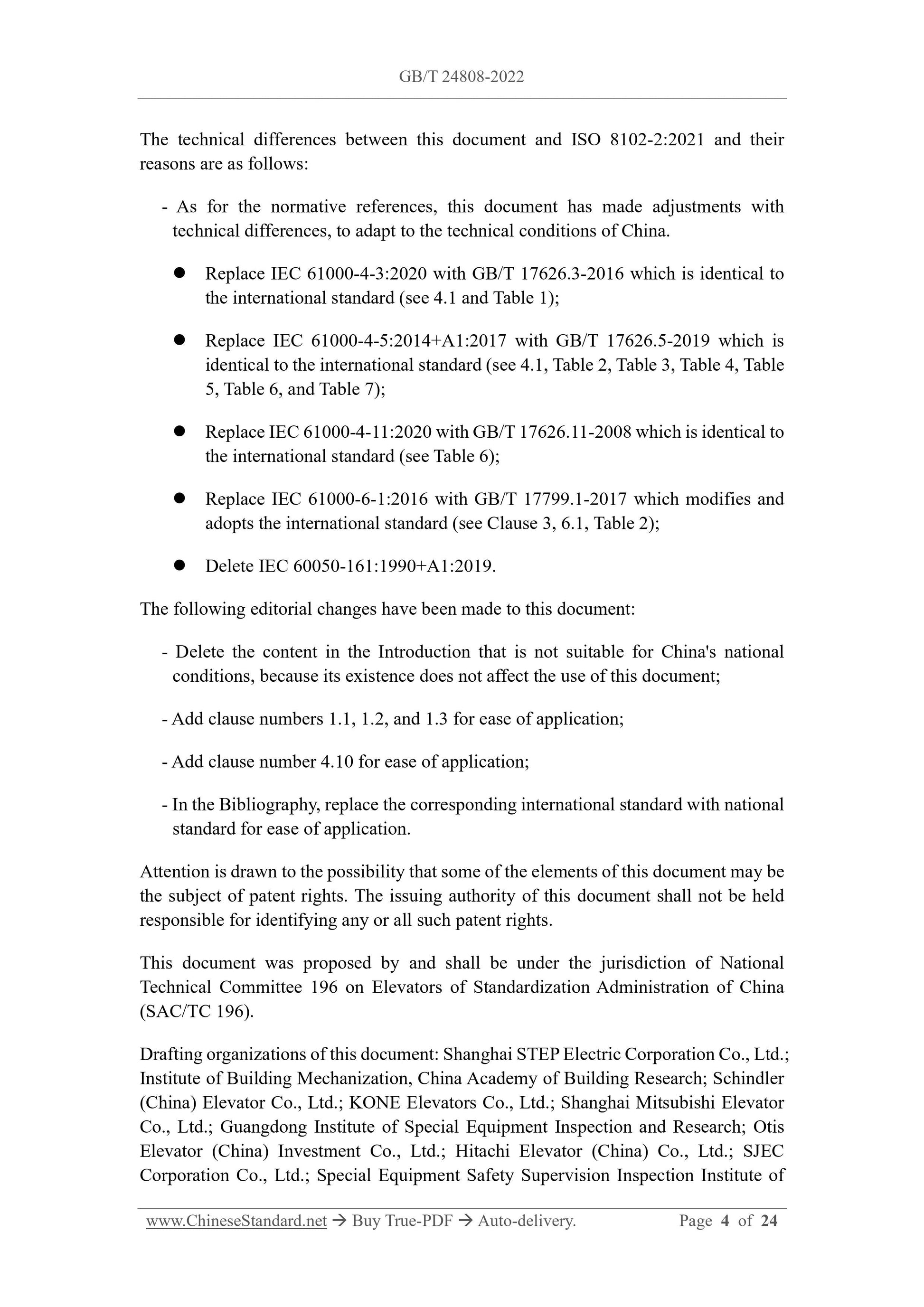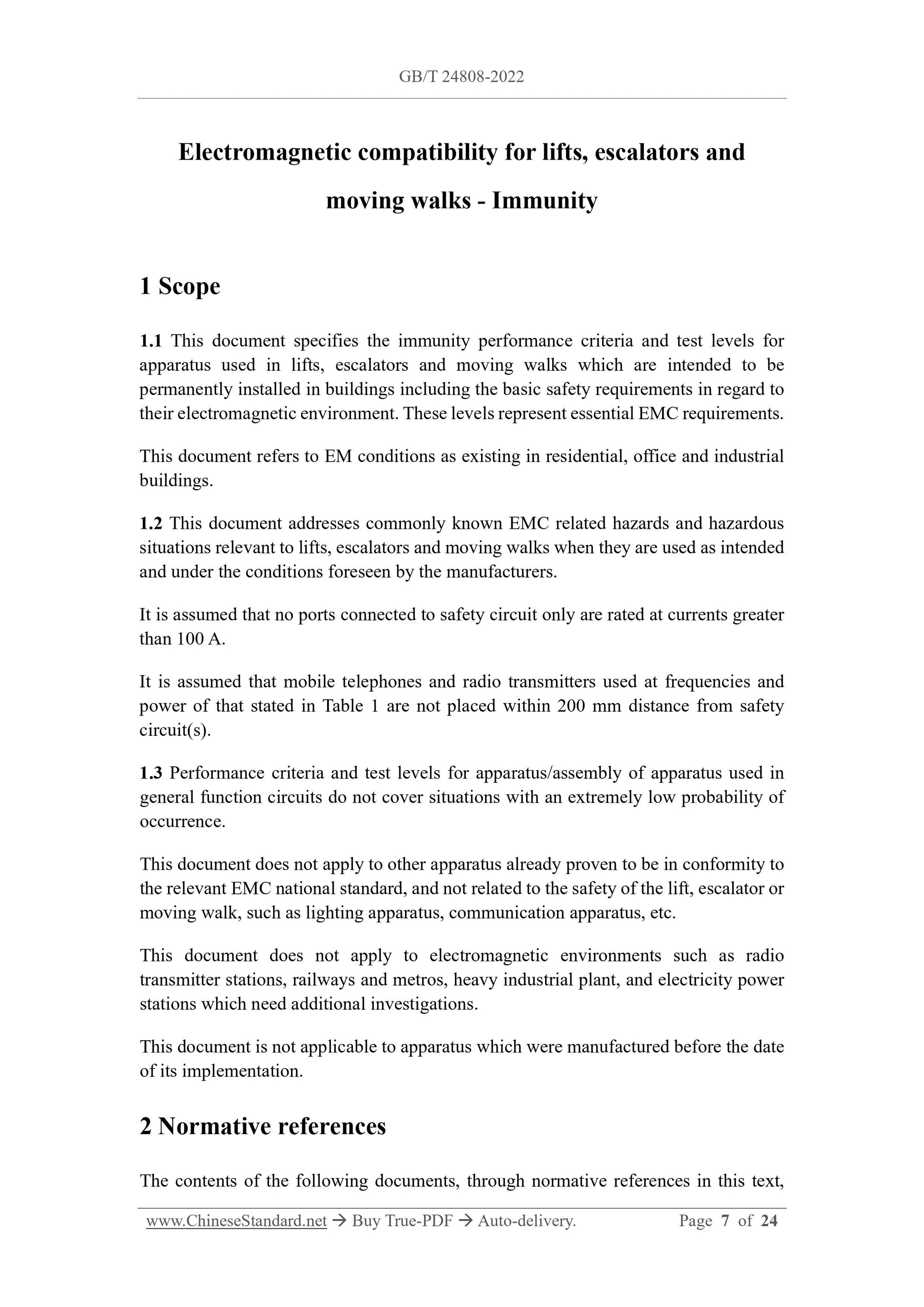1
/
of
6
www.ChineseStandard.us -- Field Test Asia Pte. Ltd.
GB/T 24808-2022 English PDF (GB/T24808-2022)
GB/T 24808-2022 English PDF (GB/T24808-2022)
Regular price
$290.00
Regular price
Sale price
$290.00
Unit price
/
per
Shipping calculated at checkout.
Couldn't load pickup availability
GB/T 24808-2022: Electromagnetic compatibility for lifts, escalators and moving walks - Immunity
Delivery: 9 seconds. Download (and Email) true-PDF + Invoice.Get Quotation: Click GB/T 24808-2022 (Self-service in 1-minute)
Newer / historical versions: GB/T 24808-2022
Preview True-PDF
Scope
1.1 This document specifies the immunity performance criteria and test levels forapparatus used in lifts, escalators and moving walks which are intended to be
permanently installed in buildings including the basic safety requirements in regard to
their electromagnetic environment. These levels represent essential EMC requirements.
This document refers to EM conditions as existing in residential, office and industrial
buildings.
1.2 This document addresses commonly known EMC related hazards and hazardous
situations relevant to lifts, escalators and moving walks when they are used as intended
and under the conditions foreseen by the manufacturers.
It is assumed that no ports connected to safety circuit only are rated at currents greater
than 100 A.
It is assumed that mobile telephones and radio transmitters used at frequencies and
power of that stated in Table 1 are not placed within 200 mm distance from safety
circuit(s).
1.3 Performance criteria and test levels for apparatus/assembly of apparatus used in
general function circuits do not cover situations with an extremely low probability of
occurrence.
This document does not apply to other apparatus already proven to be in conformity to
the relevant EMC national standard, and not related to the safety of the lift, escalator or
moving walk, such as lighting apparatus, communication apparatus, etc.
This document does not apply to electromagnetic environments such as radio
transmitter stations, railways and metros, heavy industrial plant, and electricity power
stations which need additional investigations.
This document is not applicable to apparatus which were manufactured before the date
of its implementation.
Basic Data
| Standard ID | GB/T 24808-2022 (GB/T24808-2022) |
| Description (Translated English) | Electromagnetic compatibility for lifts, escalators and moving walks - Immunity |
| Sector / Industry | National Standard (Recommended) |
| Classification of Chinese Standard | Q78 |
| Word Count Estimation | 19,117 |
| Issuing agency(ies) | State Administration for Market Regulation, China National Standardization Administration |
Share
